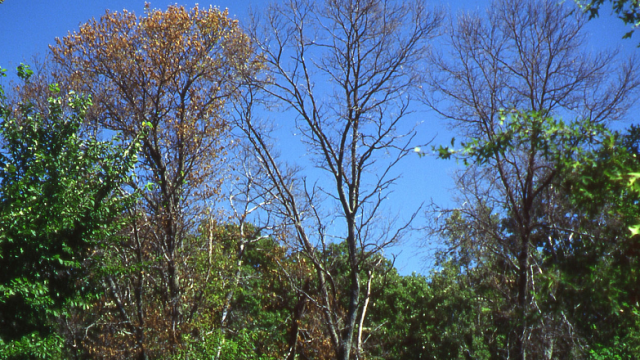It sounds like a bizarre video game mashup, but farmers have reported “zombie” plants since the early 1600s: plants that took on a sickly yellow look and grew strange leaf-like structures or bushy growths instead of flowering and reproducing.
Since 1967, we’ve known that this is the work of a bacteria called phytoplasma, which infects several species of flowering plants, including apple trees, coconut palms, coneflower, mulberry trees, sandalwood, sugarcane, and wine grapes. It strikes mostly in tropical and subtropical regions. Infected plants are still alive, of course, but they can’t reproduce, and they often sprout weird growths in place of their usual flowers. That’s because phytoplasma hijack the plants’ life cycles to help the infection reproduce and spread.
“These plants become the living dead,” said geneticist Günter Theißen in a press release. “Eventually they only serve the spread of the bacteria.”
Living Dead Plants
Now, thanks to the work of post-graduate student Florian Rümpler at the Friedrich Schiller University Jena in Germany, scientists understand exactly how the bacteria takes over plants and turns them into the living dead.
The bacteria produce a protein called SAP54, which mimics the structure of a protein in its plant hosts involved in the development of blossoms. When other proteins in the plant called MADS-domain proteins bind with SAP54 instead of the plant’s own proteins, that disrupts the process of developing petals and other flower organs. Instead of flowers, some infected plants grow vestigial leaf-like structures in a condition called phyllody.
In other plants, like apple trees, phytoplasma infection causes a condition called “witch’s broom,” in which the trees produce a dense mass of shoots from a single point, creating bushy, broom-like growths. Infected plants may also yellow and die as the bacteria damages their phloem, the tissue that transports carbohydrates from the leaves.
Rümpler and his team say the mimicry is no coincidence; phytoplasma seems to have evolved to mimic its hosts’ proteins as a way of hijacking the plants’ reproductive systems. The geneticists published their work in the journal Trends in Plant Science.
Spreading the Infection
How does that benefit the bacteria? When phytoplasma rewires a plant’s life cycle, it’s also using the plant to help lure in new hosts.
Phytoplasma can only live in infected plants or in the digestive system of insects like leafhoppers, which spread the bacteria to new plant hosts. Most plants produce a hormone called jasmonate, which helps repel leafhoppers and other insects that feed on plants, but phytoplasma encourages production of a protein called SAP11, which causes plants to make less jasmonate.
As a result, infected plants are inviting targets for leafhoppers, who lay more eggs on their leaves. When the eggs hatch, the newborn leafhopper nymphs eat the leaves – along with a gutload of phytoplasma, which they will spread to other plants.
[Friedrich Schiller University Jena, Trends in Plant Science]
Top image: Joseph O’Brien, USDA Forest Service, Bugwood.org, via Wikimedia Commons
